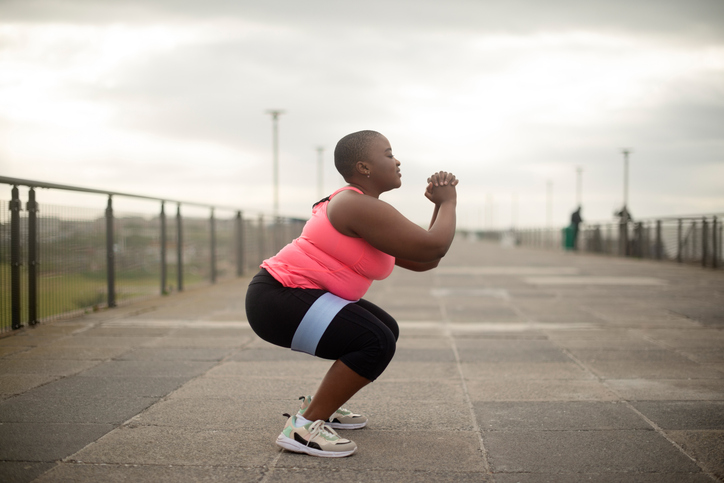Whether you’re loading a barbell onto your back, lifting a kettlebell over your shoulder, or just warming up with bodyweight squats, one question remains constant: What is the appropriate squat depth?
How low you squat is just as important to your performance, safety and results as how much weight you squat, so squat depth should be high on your form checklist, according to Carol Mack, DPT, CSCSDoctor of Physical Therapy and Strength and Conditioning Coach. Read on to find out why.
How far should you squat?
Unless you’re a competitive powerlifter and your goal is to lift as much weight as possible in a squat, Mack recommends squatting as deep as you can comfortably without sacrificing form. Deep squats help activate muscles more efficiently and build strength in a greater range of motion, which is important if you’re training for anything beyond aesthetics, such as sports or everyday jobs.
But your squat depth will vary based on some personal factors, such as “whether you have knee, hip or ankle pain, and whether you have enough mobility to go deeper,” Mack says.
What if your knees turn away from your toes?
One persistent myth about squat depth is that you should never let your knees go beyond your toes. Although this sign may point to other mistakes you might be making — like not pivoting from your hips — Mack says it’s likely your knees will drift away from your toes if you’re going to do a deep squat, especially with an activity like weightlifting.
“Don’t worry about your knees moving forward past 90 degrees,” she says. “Of course, don’t push yourself deeper if you feel pain or tightness. But if you’re comfortable going deeper and listening to your body, it’s okay to go lower.
One alignment tip that helps is to look down and make sure your knees are in line with your middle toes, rather than spaced outward, she adds. (Just be sure to apply this tip during your warm-up, not while attempting a PR, for example.)
How can you improve your squat depth?

If squat depth is something you struggle with, here are some strategies to help you get down to a lower level.
1. Focus on your hips
Since squat depth isn’t just about the quads and glutes, focusing on the hips can be a game-changer, Mack says.
Instead of lowering your butt straight down, try bringing your hips back slightly — known as hinge — as you lower into a squat. This will help you bend with more hip flexion (aka bringing your knees closer to your chest), which can lead to improved depth.
It’s also important to keep your knees from buckling inward as you approach the bottom of the squat and move to standing.
“This may require adding hip mobility or strengthening to your routine to improve your squat position,” Mack notes. Hip mobility exercises can do more than just help with squat depth, too. They can reduce the stress on the body caused by sitting too much, improve overall flexibility, and give you a greater range of motion.
2. Increase ankle mobility
It’s also important to have more ankle mobility, Mack adds. This aspect of the squat can sometimes be overlooked, but it plays a huge role in helping you go deeper. If you’ve ever felt like your ankles are lifting off the ground during a squat, that’s a sign that you need to improve your mobility.
Ankle strengthening exercises can give you greater mobility and stability to support your squat, no matter how deep you are.
3. Strengthen your heart
Finally, remember that squats also involve your spine, Mack says.
“Some people have trouble keeping their torso upright as they move deeper into the squat,” she says. “This can throw off alignment throughout the squat movement. It can happen for many reasons, including mobility, but core strength is the main culprit.
If you tend to round your back when you get into a squat position, or feel your upper body collapse as you push up to stand, that usually means you need to incorporate more core work into your routine, she suggests.
Fortunately, there are plenty of options for that, and as with the other mobility and strengthening options here, you’ll reduce your risk of injury and improve your form for a wide range of movements, including squats.
